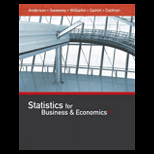
Concept explainers
A study reported in The Accounting Review examined the separate and joint effects of two levels of time pressure (low and moderate) and three levels of knowledge (naive, declarative, and procedural) on key word selection behavior in tax research. Subjects were given a tax case containing a set of facts, a tax issue, and a key word index consisting of 1336 key words. They were asked to select the key words they believed would refer them to a tax authority relevant to resolving the tax case. Prior to the experiment, a group of tax experts determined that the text contained 19 relevant key words. Subjects in the naive group had little or no declarative or procedural knowledge, subjects in the declarative group had significant declarative knowledge but little or no procedural knowledge, and subjects in the procedural group had significant declarative knowledge and procedural knowledge. Declarative knowledge consists of knowledge of both the applicable tax rules and the technical terms used to describe such rules. Procedural knowledge is knowledge of the rules that guide the tax researcher’s search for relevant key words. Subjects in the low time pressure situation were told they had 25 minutes to complete the problem, an amount of time which should be “more than adequate” to complete the case: subjects in the moderate time pressure situation were told they would have “only” 11 minutes to complete the case. Suppose 25 subjects were selected for each of the six treatment combinations and the sample
| Knowledge | ||||
| Naive | Declarative | Procedural | ||
| Low | 1.13 | 1.56 | 2.00 | |
| (1.12) | (1.33) | (1.54) | ||
| Time Pressure | Moderate | 0.48 | 1.68 | 2.86 |
| (0.80) | (1.36) | (1.80) |
Use the ANOVA procedure to test for any significant differences due to time pressure, knowledge, and interaction. Use a .05 level of significance. Assume that the total sum of squares for this experiment is 327.50.
Trending nowThis is a popular solution!

Chapter 13 Solutions
Bundle: Statistics for Business & Economics, Loose-leaf Version, 13th + MindTap Business Statistics with XLSTAT, 2 terms (12 months) Printed Access Card
- T1.4: Let ẞ(G) be the minimum size of a vertex cover, a(G) be the maximum size of an independent set and m(G) = |E(G)|. (i) Prove that if G is triangle free (no induced K3) then m(G) ≤ a(G)B(G). Hints - The neighborhood of a vertex in a triangle free graph must be independent; all edges have at least one end in a vertex cover. (ii) Show that all graphs of order n ≥ 3 and size m> [n2/4] contain a triangle. Hints - you may need to use either elementary calculus or the arithmetic-geometric mean inequality.arrow_forwardWe consider the one-period model studied in class as an example. Namely, we assumethat the current stock price is S0 = 10. At time T, the stock has either moved up toSt = 12 (with probability p = 0.6) or down towards St = 8 (with probability 1−p = 0.4).We consider a call option on this stock with maturity T and strike price K = 10. Theinterest rate on the money market is zero.As in class, we assume that you, as a customer, are willing to buy the call option on100 shares of stock for $120. The investor, who sold you the option, can adopt one of thefollowing strategies: Strategy 1: (seen in class) Buy 50 shares of stock and borrow $380. Strategy 2: Buy 55 shares of stock and borrow $430. Strategy 3: Buy 60 shares of stock and borrow $480. Strategy 4: Buy 40 shares of stock and borrow $280.(a) For each of strategies 2-4, describe the value of the investor’s portfolio at time 0,and at time T for each possible movement of the stock.(b) For each of strategies 2-4, does the investor have…arrow_forwardNegate the following compound statement using De Morgans's laws.arrow_forward
- Negate the following compound statement using De Morgans's laws.arrow_forwardQuestion 6: Negate the following compound statements, using De Morgan's laws. A) If Alberta was under water entirely then there should be no fossil of mammals.arrow_forwardNegate the following compound statement using De Morgans's laws.arrow_forward
- Characterize (with proof) all connected graphs that contain no even cycles in terms oftheir blocks.arrow_forwardLet G be a connected graph that does not have P4 or C3 as an induced subgraph (i.e.,G is P4, C3 free). Prove that G is a complete bipartite grapharrow_forwardProve sufficiency of the condition for a graph to be bipartite that is, prove that if G hasno odd cycles then G is bipartite as follows:Assume that the statement is false and that G is an edge minimal counterexample. That is, Gsatisfies the conditions and is not bipartite but G − e is bipartite for any edge e. (Note thatthis is essentially induction, just using different terminology.) What does minimality say aboutconnectivity of G? Can G − e be disconnected? Explain why if there is an edge between twovertices in the same part of a bipartition of G − e then there is an odd cyclearrow_forward
 Glencoe Algebra 1, Student Edition, 9780079039897...AlgebraISBN:9780079039897Author:CarterPublisher:McGraw Hill
Glencoe Algebra 1, Student Edition, 9780079039897...AlgebraISBN:9780079039897Author:CarterPublisher:McGraw Hill

